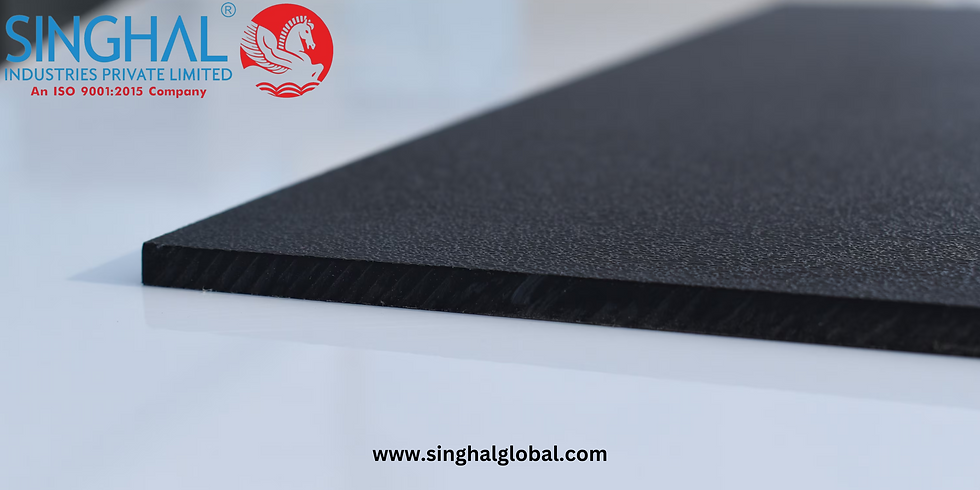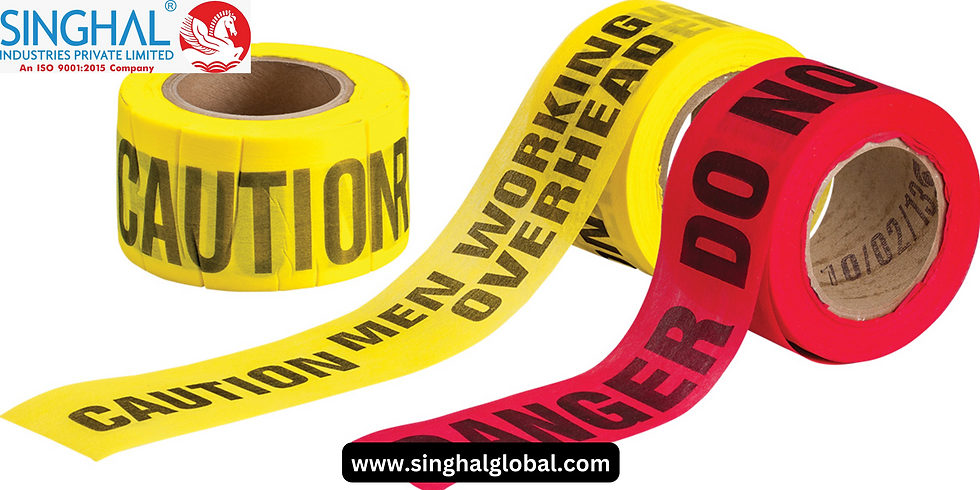Understanding Barricade Tape: Its Uses, Benefits, and Importance
- Sahil Prakash
- Aug 5, 2024
- 4 min read
Introduction
Barricade tape, often referred to as caution tape or crime scene tape, is a crucial tool for ensuring safety and maintaining order in various situations. This brightly colored tape is commonly used to mark off hazardous areas, restrict access, and delineate crime scenes. Its vivid colors and clear messaging make it an effective visual barrier, helping to prevent accidents and ensure that important areas are easily identifiable. In this blog, we will explore What Does Caution Tape Mean, its different types and uses, and why it is an essential component in safety and crime scene management.
What Does Caution Tape Mean?
Caution tape, also known as hazard tape or warning tape, is a type of plastic tape used to indicate that an area is dangerous or restricted. Typically, it is yellow with black stripes, although other color combinations may also be used depending on the context. The primary purpose of caution tape is to alert people to potential hazards or to keep them away from restricted or dangerous areas. This tape is often used in construction sites, accident scenes, or any area where safety is a concern.
Crime Scene Tape Meaning
Crime scene tape is a specialized form of barricade tape used specifically at crime scenes. This tape is typically marked with "Police Line Do Not Cross" or similar messaging to prevent unauthorized access and to preserve the integrity of the crime scene. It is usually bright yellow with bold, black text. The use of crime scene tape helps to maintain the scene's security, ensuring that evidence is not disturbed and that the investigation can proceed without interference. This tape is crucial for law enforcement and forensic teams as they work to gather evidence and solve criminal cases.
Types of Barricade Tape
Caution Tape: This is the most common type of barricade tape, used to indicate potential hazards. It is often used in construction zones, maintenance areas, and anywhere there might be risks to health and safety.
Crime Scene Tape: Used specifically at crime scenes, this tape is designed to prevent unauthorized access and protect the scene from contamination. It is a key tool for law enforcement agencies and forensic teams.
Barrier Tape: Often used for crowd control or to manage access to specific areas during events. Barrier tape helps to guide people and maintain order in crowded or busy situations.
Advantages of Barricade Tape
Enhanced Safety: Barricade tape helps to prevent accidents by clearly marking off dangerous areas. Whether it's a construction site, a hazardous spill, or an area undergoing maintenance, the tape alerts people to stay away and avoid potential risks.
Clear Communication: The vivid colors and bold text on barricade tape make it easy to communicate important messages. Whether it's caution, danger, or restricted access, the tape ensures that the message is visible and understood.
Easy to Deploy: The Crime Scene Tape Meaning is lightweight and easy to handle. It can be quickly deployed and removed as needed, making it a convenient tool for managing safety and security.
Cost-Effective: Compared to other safety measures, barricade tape is relatively inexpensive. It provides an affordable solution for marking off areas and ensuring safety.
Versatile Use: Barricade tape can be used in a wide range of situations, from construction sites and accident scenes to public events and crowd control. Its versatility makes it a valuable tool for various applications.
Benefits of Crime Scene Barricade Tape
Preserves Evidence: At a crime scene, preserving the integrity of evidence is crucial. Crime scene tape helps to prevent contamination and tampering, ensuring that the evidence remains intact for investigation.
Maintains Scene Security: By restricting access to unauthorized individuals, crime scene tape helps to secure the area and maintain the scene's security. This is essential for a thorough and accurate investigation.
Facilitates Investigation: Crime scene tape helps to delineate the boundaries of the investigation area, making it easier for law enforcement and forensic teams to work effectively and systematically.
Reduces Interference: By clearly marking off the area, crime scene tape minimizes the risk of interference from the public or other parties, allowing investigators to focus on their work without distractions.
Conclusion
Barricade tape, including caution tape and crime scene tape, plays a vital role in safety and security. Its ability to clearly communicate danger, restrict access, and preserve important areas makes it an invaluable tool in various situations. Whether used on construction sites, at accident scenes, or at Crime Scene Barricade Tape ensures that safety is maintained and that important work can be carried out without interference. Understanding the different types and benefits of barricade tape helps in appreciating its importance and ensures that it is used effectively.
Frequently Asked Questions (FAQs)
1. What is the main purpose of caution tape?
Caution tape is primarily used to mark off hazardous areas and prevent accidents. It alerts people to potential dangers and helps to keep them away from risky or restricted areas.
2. What does crime scene tape indicate?
Crime scene tape indicates that an area is a crime scene and is restricted from unauthorized access. It is used by law enforcement to preserve evidence and ensure the security of the scene.
3. Can barricade tape be used for crowd control?
Yes, barricade tape can be used for crowd control by guiding people and managing access to specific areas during events or busy situations. It helps maintain order and prevent crowd congestion.



Comments